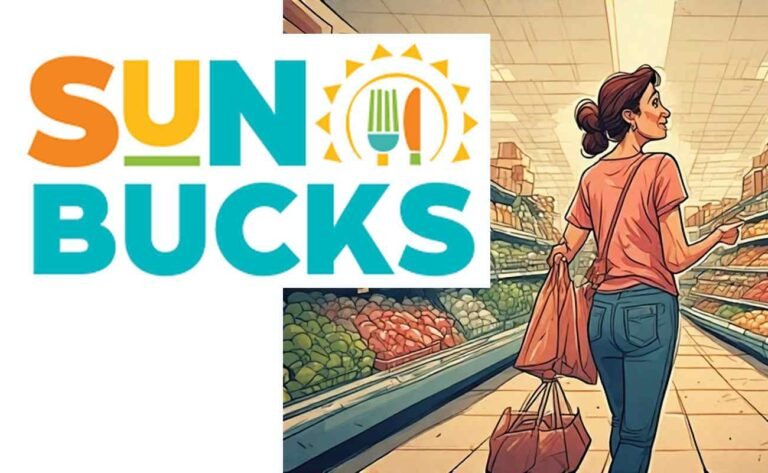Broad-Based Categorical Eligibility (BBCE) for SNAP: What It Means for Your Application
Broad-Based Categorical Eligibility (BBCE) for SNAP is a policy that simplifies the application process for the Supplemental Nutrition Assistance Program (SNAP) by allowing households receiving non-cash benefits from Temporary Assistance for Needy Families (TANF) or state Maintenance of Effort (MOE) programs to qualify automatically. BBCE eliminates strict asset tests and raises income limits in many states, making it easier for low-income families, working households, and those saving for the future to access food assistance. This guide explores how BBCE impacts your SNAP application, eligibility criteria, state-specific rules, and its benefits for streamlining access to nutrition support.
Understanding BBCE is crucial for anyone applying for SNAP benefits. By leveraging non-cash TANF/MOE benefits, such as informational pamphlets or referral services, BBCE reduces bureaucratic hurdles and aligns SNAP with other anti-poverty programs. This article provides a detailed breakdown through lists and tables to help you navigate the SNAP application process with ease, ensuring you maximize your eligibility under BBCE policies.
What Is Broad-Based Categorical Eligibility for SNAP?
BBCE is a federal policy that allows states to expand SNAP eligibility by linking it to non-cash benefits funded through TANF or state MOE programs. Unlike traditional SNAP rules, which impose strict income and asset limits, BBCE enables states to waive or modify these requirements for households receiving benefits like brochures, job training referrals, or toll-free helplines. This flexibility helps low-income families, working households, and those with modest savings qualify for SNAP without facing rigid financial tests.
The policy was introduced following the 1996 welfare reform, which replaced Aid to Families with Dependent Children (AFDC) with TANF. BBCE has been adopted by over 40 states, streamlining SNAP administration and reducing food insecurity for millions. It ensures that families with high expenses, such as rent or childcare, can still access nutrition assistance even if their gross income slightly exceeds federal SNAP limits.
Key Benefits of BBCE for SNAP Applicants
BBCE offers significant advantages for SNAP applicants by simplifying eligibility and expanding access. Here’s a detailed list of its benefits:
- Eliminates Asset Tests: Many states using BBCE remove the federal asset limit ($2,750 for households without elderly/disabled members, $4,250 for those with), allowing families to save without losing benefits.
- Raises Income Limits: BBCE permits states to increase gross income thresholds, often up to 200% of the Federal Poverty Level (FPL), compared to the standard 130% FPL.
- Streamlines Application Process: By syncing SNAP with TANF/MOE programs, BBCE reduces paperwork and verification requirements, making applications faster.
- Supports Working Families: Families with slightly higher incomes due to employment can still qualify, encouraging work without penalty.
- Promotes Financial Stability: BBCE allows households to build savings for emergencies or future goals without jeopardizing SNAP eligibility.
- Reduces Administrative Costs: States benefit from simplified processes, lowering the burden on SNAP agencies and improving efficiency.
- Enhances Access for Vulnerable Groups: Households with elderly or disabled members can bypass gross income tests in some cases, ensuring broader access.
These benefits make BBCE a powerful tool for reducing hunger and supporting economic mobility. For more insights on how SNAP supports low-income households, check out our guide on SNAP income limits.
How BBCE Affects Your SNAP Application
When applying for SNAP, BBCE can significantly alter the eligibility process. Below is a step-by-step list of how BBCE impacts your application:
- Determine State BBCE Adoption: Check if your state implements BBCE, as not all states use this policy. Over 40 states participate, but eligibility criteria vary.
- Identify Qualifying TANF/MOE Benefits: Confirm if your household receives non-cash TANF/MOE benefits, such as job training, childcare referrals, or informational materials.
- Understand Modified Eligibility Rules: In BBCE states, asset tests may be eliminated, and gross income limits may be higher (up to 200% FPL in some cases).
- Complete SNAP Application: Submit your SNAP application, noting any TANF/MOE benefits received, as these trigger categorical eligibility.
- Provide Documentation: While BBCE reduces documentation needs, you must still verify TANF/MOE benefit receipt and income for benefit calculation.
- Attend Interview: Most states require an interview to confirm eligibility, but BBCE simplifies the financial assessment process.
- Receive Benefit Determination: BBCE does not affect benefit amounts; these are based on your net income and household size under standard SNAP rules.
This streamlined process ensures that eligible households face fewer barriers. For more details on SNAP eligibility, visit the USDA Food and Nutrition Service for official guidance.
State-Specific BBCE Rules and Variations
BBCE policies differ across states, as each sets its own TANF/MOE program criteria. The table below outlines key variations in BBCE implementation for select states as of 2025:
| State | BBCE Status | TANF/MOE Benefit Examples | Asset Limit | Gross Income Limit (% FPL) |
|---|---|---|---|---|
| California | Adopted | Job training, childcare referrals | None | 200% |
| New York | Adopted | Informational pamphlets, helplines | None | 200% |
| Texas | Adopted | Employment services, transportation assistance | None | 165% |
| Florida | Not Adopted | N/A | $2,750/$4,250 | 130% |
| Georgia | Adopted | Work support programs, brochures | None | 130% |
| Pennsylvania | Adopted | Counseling services, referral hotlines | None | 160% |
Note: Households in non-BBCE states or those with elderly/disabled members may still qualify under regular SNAP rules, which exempt such households from gross income limits but require meeting net income thresholds.
These variations highlight the importance of checking your state’s SNAP policies. For example, in Georgia, a household with modest savings might qualify under BBCE, whereas in Florida, strict asset limits apply. Always consult your state’s SNAP agency for precise requirements.
Eligibility Criteria Under BBCE
To qualify for SNAP under BBCE, households must meet specific criteria tied to TANF/MOE benefits. Here’s a detailed list of eligibility requirements:
- Receipt of TANF/MOE Benefits: Households must receive or be authorized to receive non-cash benefits, such as job training, childcare support, or informational materials.
- Gross Income Limits: Most BBCE states set gross income limits at or below 200% FPL, though some use lower thresholds (e.g., 130% or 165% FPL).
- TANF Program Goals: The TANF/MOE program must align with one of TANF’s four goals, such as supporting needy families or promoting work.
- Verification of Benefits: States must verify that households are eligible for and receive the TANF/MOE benefit conferring categorical eligibility.
- Household Composition: All household members must receive or be eligible for the TANF/MOE benefit to qualify for BBCE.
- No Eligibility Restrictions: BBCE cannot limit SNAP eligibility; households ineligible for TANF/MOE benefits can still apply under standard SNAP rules.
These criteria ensure that BBCE targets low-income households while maintaining program integrity. For a deeper dive into income calculations, explore our guide on understanding gross vs. net income for SNAP eligibility.
How BBCE Supports Working Families and Savings
BBCE is particularly beneficial for working families and those building savings. The following points explain how:
- Encourages Employment: By raising income limits, BBCE allows working families to earn more without losing SNAP benefits, reducing the “benefit cliff.”
- Promotes Asset Building: Eliminating asset tests enables households to save for emergencies, education, or homeownership without penalty.
- Reduces Financial Stress: Families with high expenses (e.g., rent, childcare) can qualify despite slightly higher gross incomes, ensuring food security.
- Supports Economic Mobility: BBCE aligns with anti-poverty goals by helping families stabilize finances while accessing nutrition assistance.
For instance, a single parent in California earning just above the federal SNAP income limit might qualify under BBCE due to receiving a TANF-funded job training referral, allowing them to maintain food assistance while working toward self-sufficiency.
Common Misconceptions About BBCE
BBCE is often misunderstood, leading to confusion among applicants. Here’s a list debunking common myths:
- Myth: BBCE gives SNAP benefits to non-needy households.
- Fact: BBCE ensures benefits go to low-income households with high expenses, as benefit amounts are still based on net income.
- Myth: BBCE eliminates all SNAP eligibility requirements.
- Fact: Applicants must still complete applications, interviews, and income verifications; BBCE only simplifies asset and gross income tests.
- Myth: BBCE is mandatory for all states.
- Fact: BBCE is optional, and states choose whether to adopt it and how to implement it.
- Myth: BBCE affects benefit amounts.
- Fact: Benefit calculations remain based on standard SNAP rules, unaffected by BBCE.
- Myth: Only elderly or disabled households benefit from BBCE.
- Fact: BBCE applies to all eligible households, though elderly/disabled households may face different income rules.
Clearing up these misconceptions helps applicants approach SNAP with confidence. For more clarity on SNAP myths, visit the Center on Budget and Policy Priorities.
BBCE and School Meals: A Hidden Benefit
BBCE extends beyond SNAP to impact school meal programs. Here’s how:
- Automatic Free School Meals: Children in SNAP households under BBCE are often directly certified for free school breakfast and lunch, reducing paperwork.
- Community Eligibility Provision: BBCE supports high-poverty schools in offering free meals to all students, boosting participation and reducing hunger.
- Impact of Restrictions: Proposals to limit BBCE could jeopardize free school meal access for nearly 1 million children, as estimated by the USDA.
This connection underscores BBCE’s role in fighting childhood hunger, ensuring kids have access to nutritious meals at school.
Challenges and Controversies Surrounding BBCE
While BBCE is widely praised, it faces criticism and challenges. Here’s a balanced list of issues:
- Administrative Complexity: Some argue BBCE’s flexibility leads to inconsistent state policies, complicating oversight.
- Potential for Misuse: Critics claim minimal TANF/MOE benefits (e.g., pamphlets) shouldn’t confer SNAP eligibility, though this affects only 0.2% of benefits.
- Policy Debates: Proposals to eliminate BBCE, like those in 2019, argue it expands SNAP beyond its intended scope, though Congress has consistently upheld it.
- State Variations: Differing BBCE rules create disparities, leaving some households in non-BBCE states with stricter eligibility requirements.
Despite these challenges, BBCE remains a critical tool for expanding SNAP access, supported by bipartisan efforts to maintain it.
How to Apply for SNAP with BBCE in Mind
Applying for SNAP in a BBCE state is straightforward but requires attention to detail. Follow this checklist:
- Research State Rules: Confirm if your state uses BBCE and its specific income and asset policies.
- Gather Documentation: Collect proof of TANF/MOE benefits, income, and household expenses.
- Submit Application: Apply online, by mail, or in person through your state’s SNAP agency.
- Mention TANF/MOE Benefits: Clearly indicate any non-cash TANF/MOE benefits received to trigger BBCE.
- Prepare for Interview: Be ready to discuss your household’s financial situation, though BBCE may reduce verification needs.
- Monitor Application Status: Check with your SNAP agency for updates and respond promptly to requests.
By following these steps, you can leverage BBCE to streamline your SNAP application and secure benefits faster.
Future of BBCE and SNAP Eligibility
The future of BBCE depends on federal and state policies. While it has strong support for reducing food insecurity, ongoing debates about SNAP funding and eligibility could impact its scope. For example, recent posts on X highlight concerns about SNAP eligibility criteria and program integrity, reflecting public interest in refining food assistance policies. Staying informed about legislative changes is essential for applicants and advocates alike.
Conclusion
Broad-Based Categorical Eligibility (BBCE) for SNAP is a game-changer for low-income households, simplifying the application process and expanding access to food assistance. By eliminating asset tests and raising income limits, BBCE supports working families, promotes savings, and reduces administrative burdens. Whether you’re applying for SNAP or advocating for policy improvements, understanding BBCE is key to navigating the program effectively. Check your state’s rules, gather necessary documentation, and take advantage of this policy to ensure your household’s nutritional needs are met.






